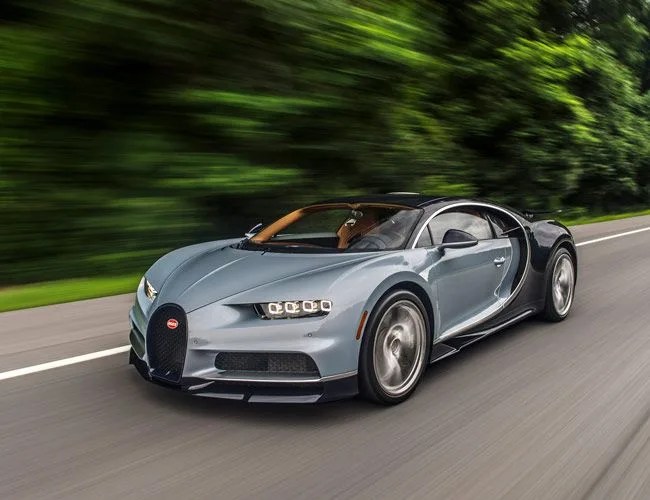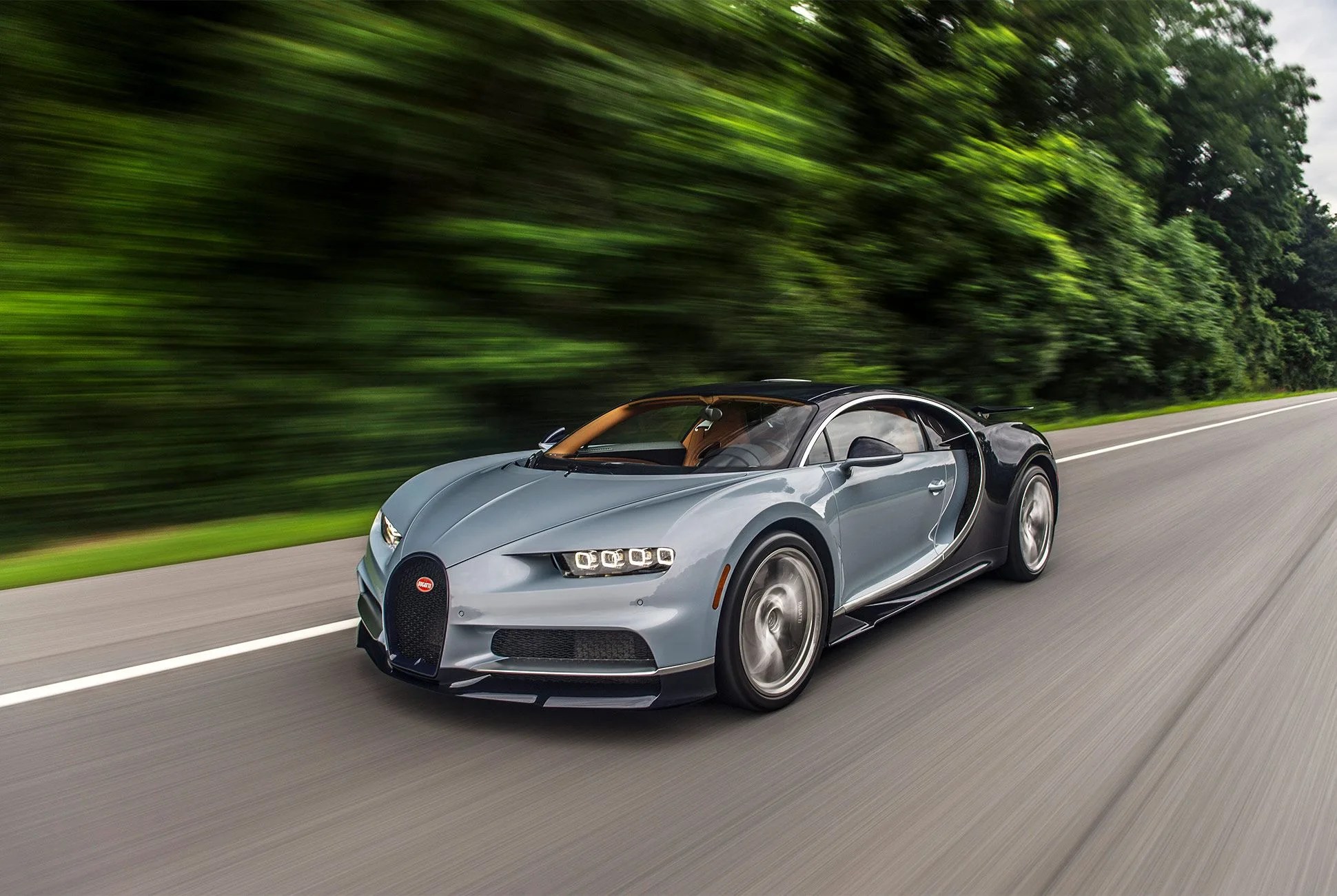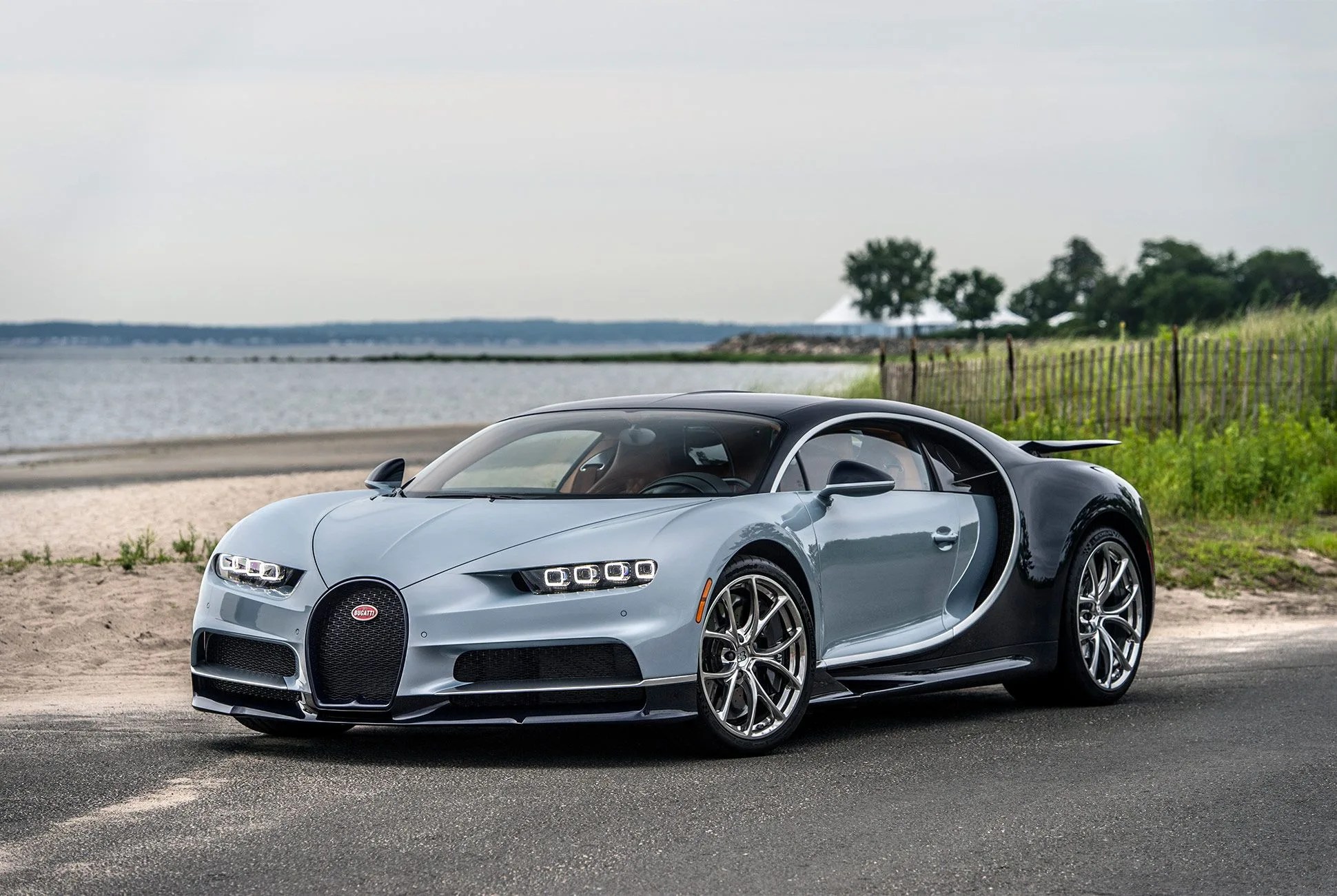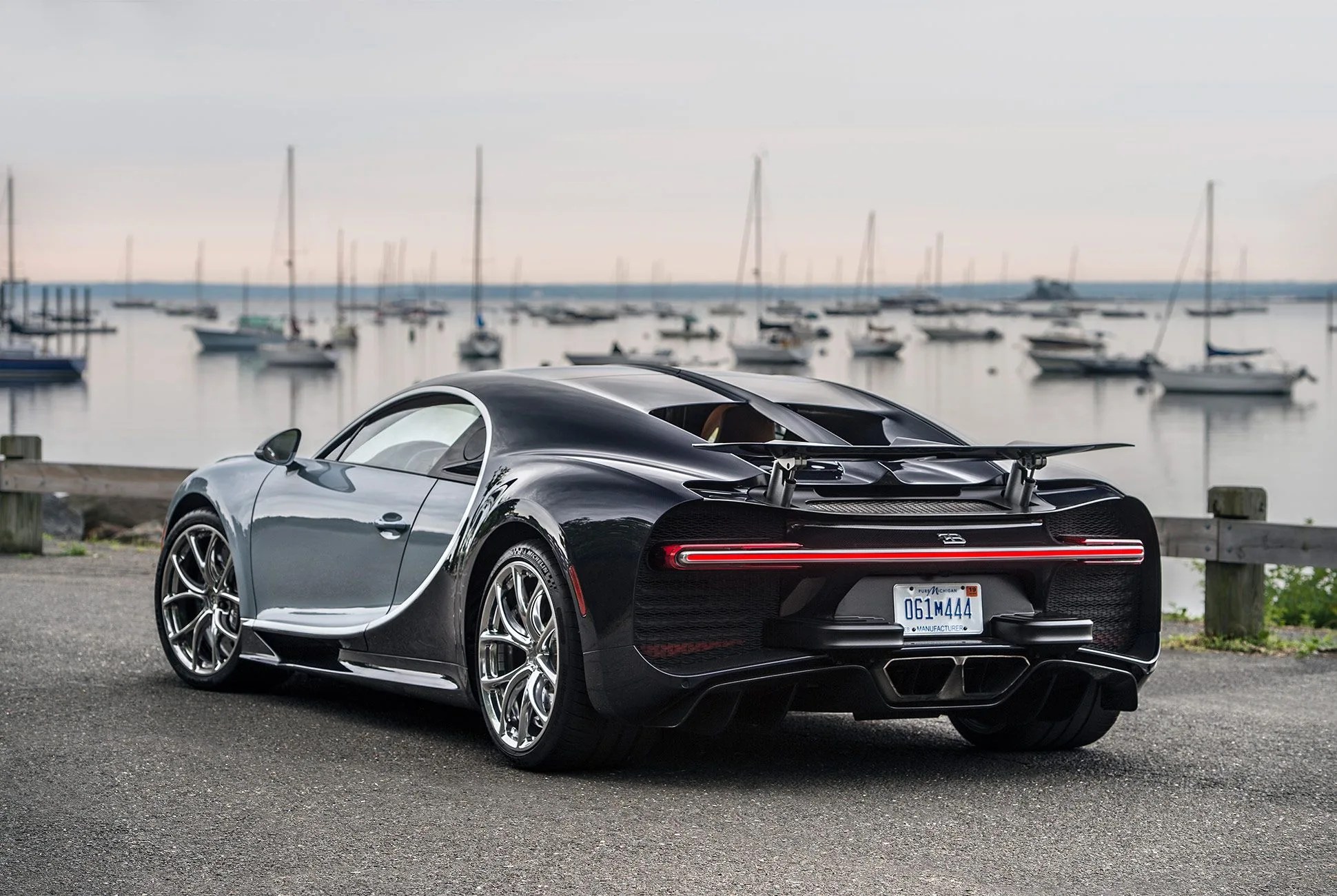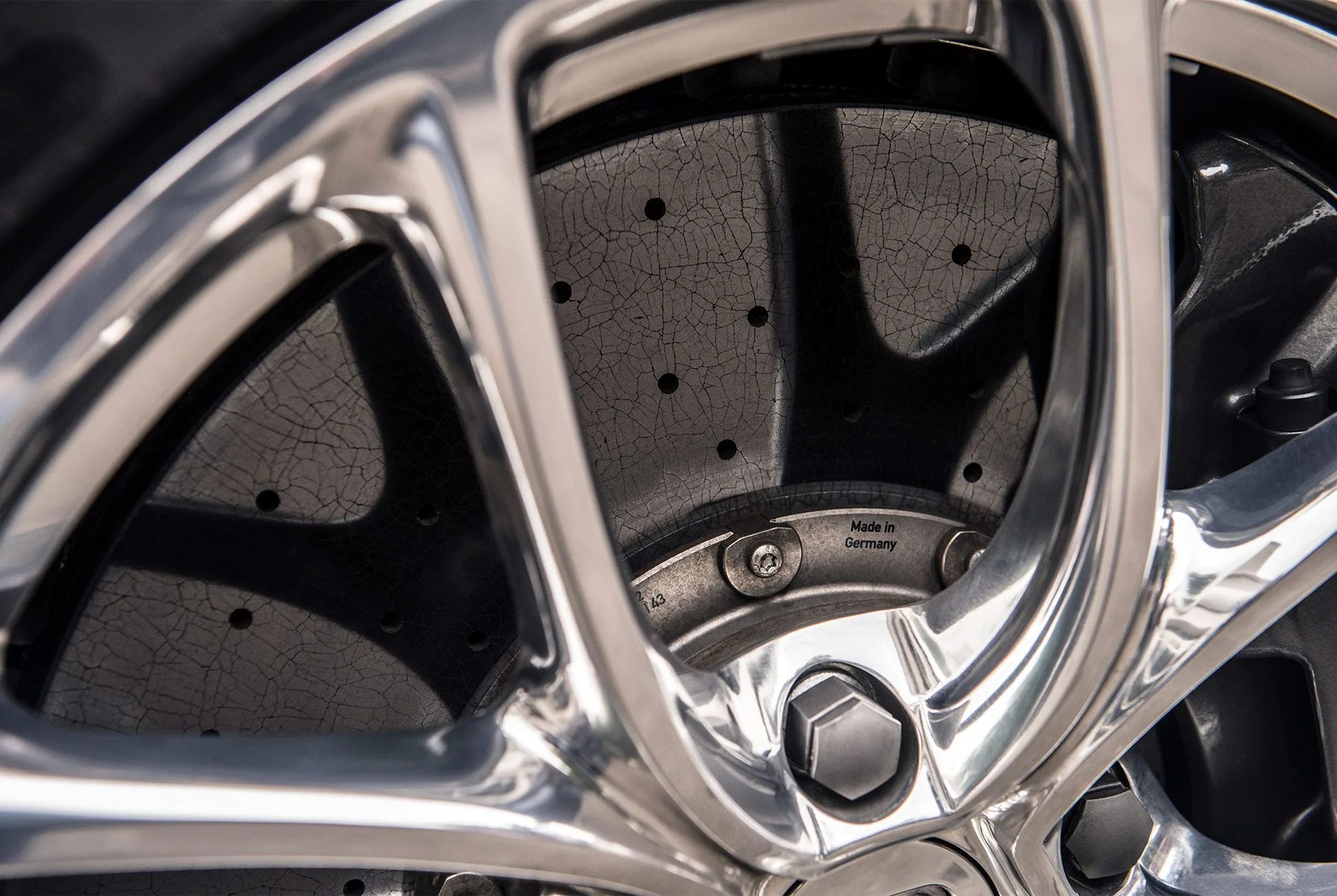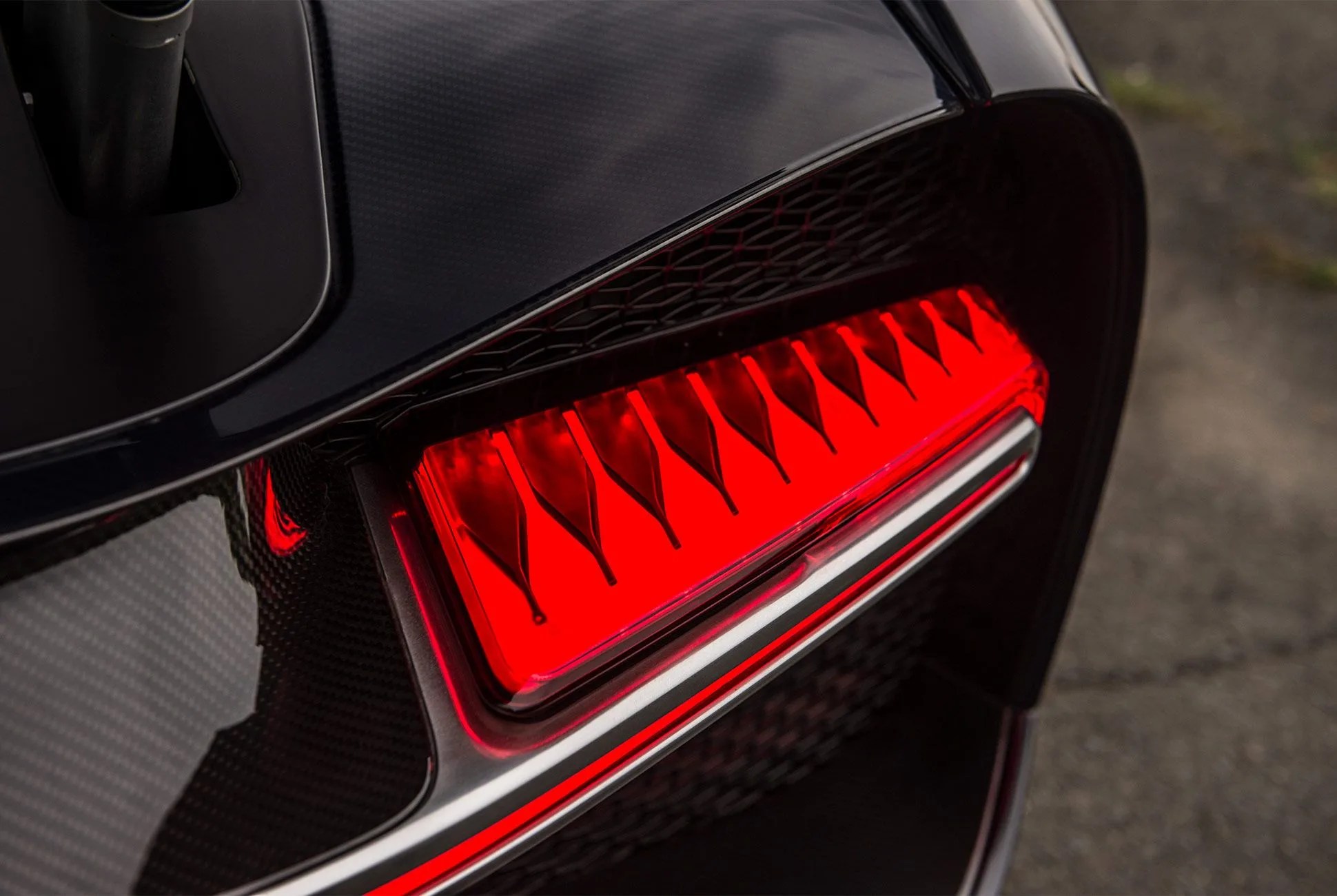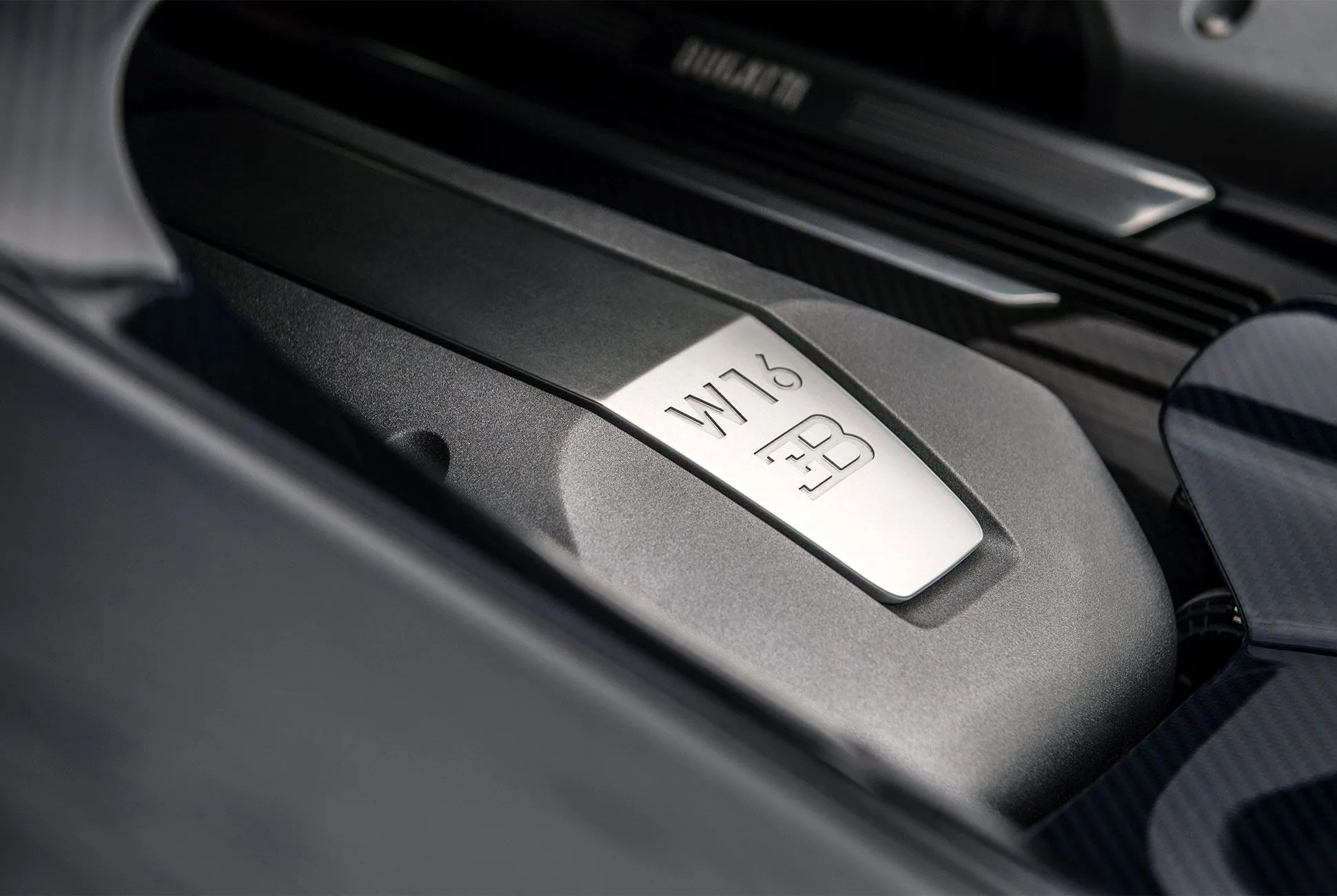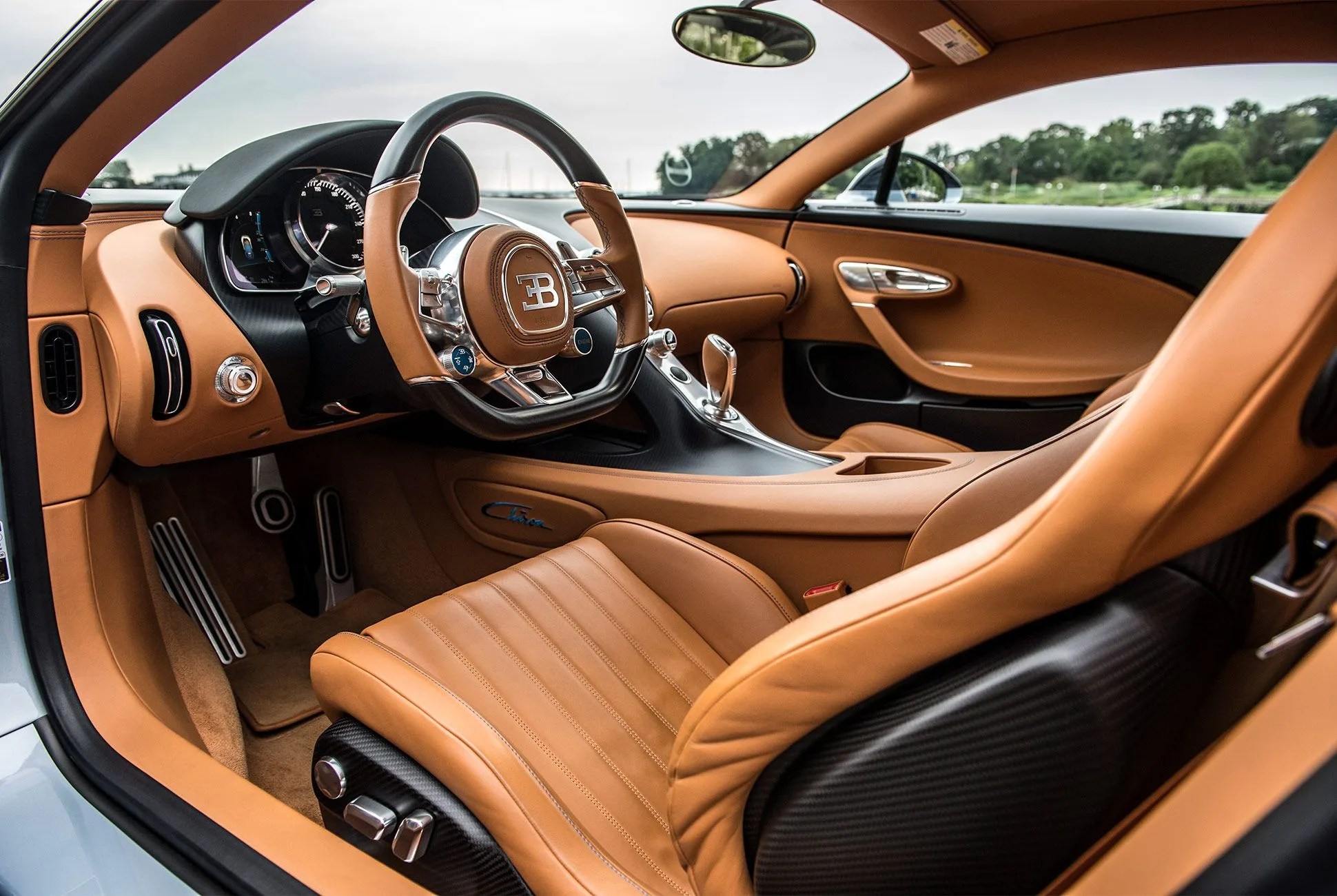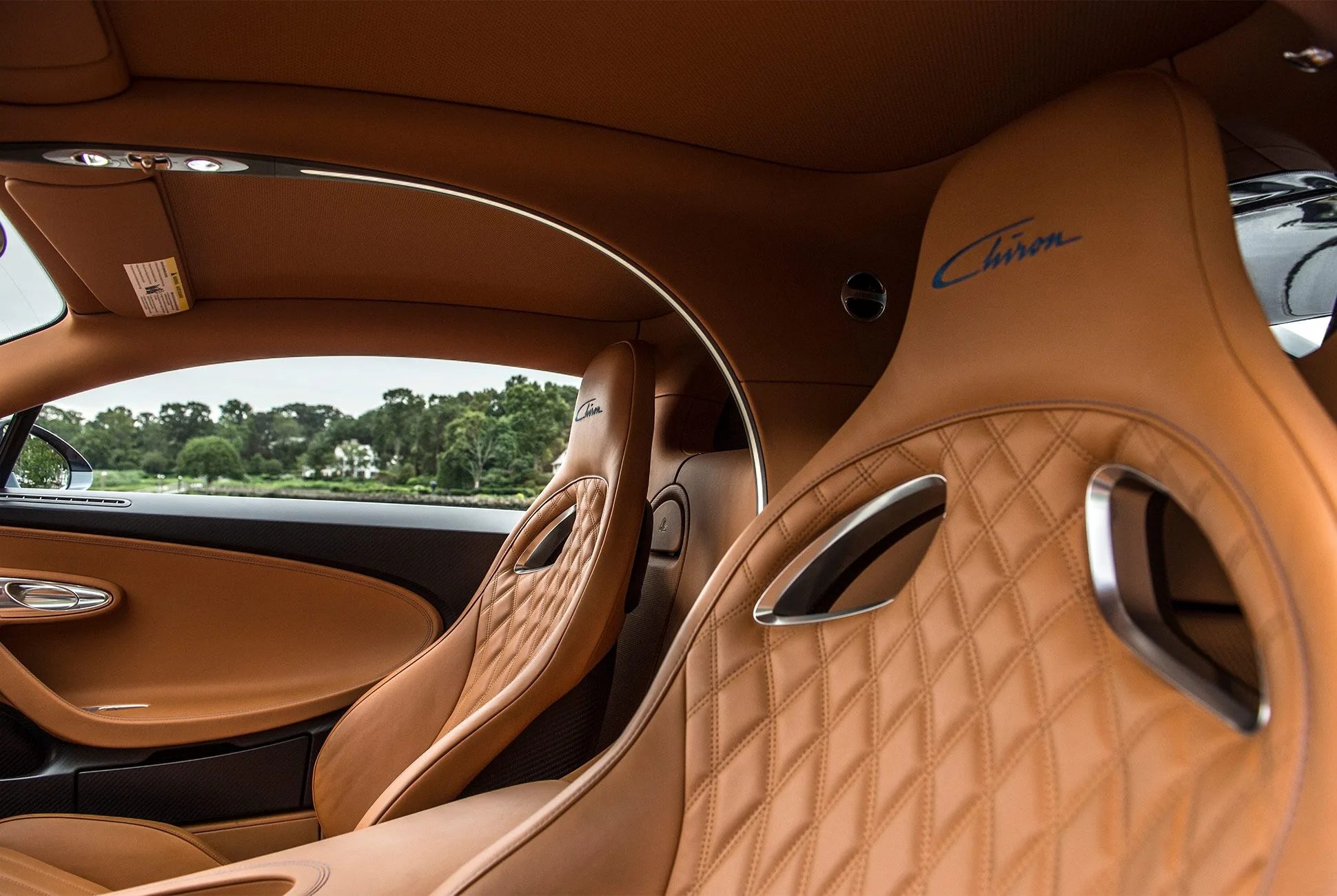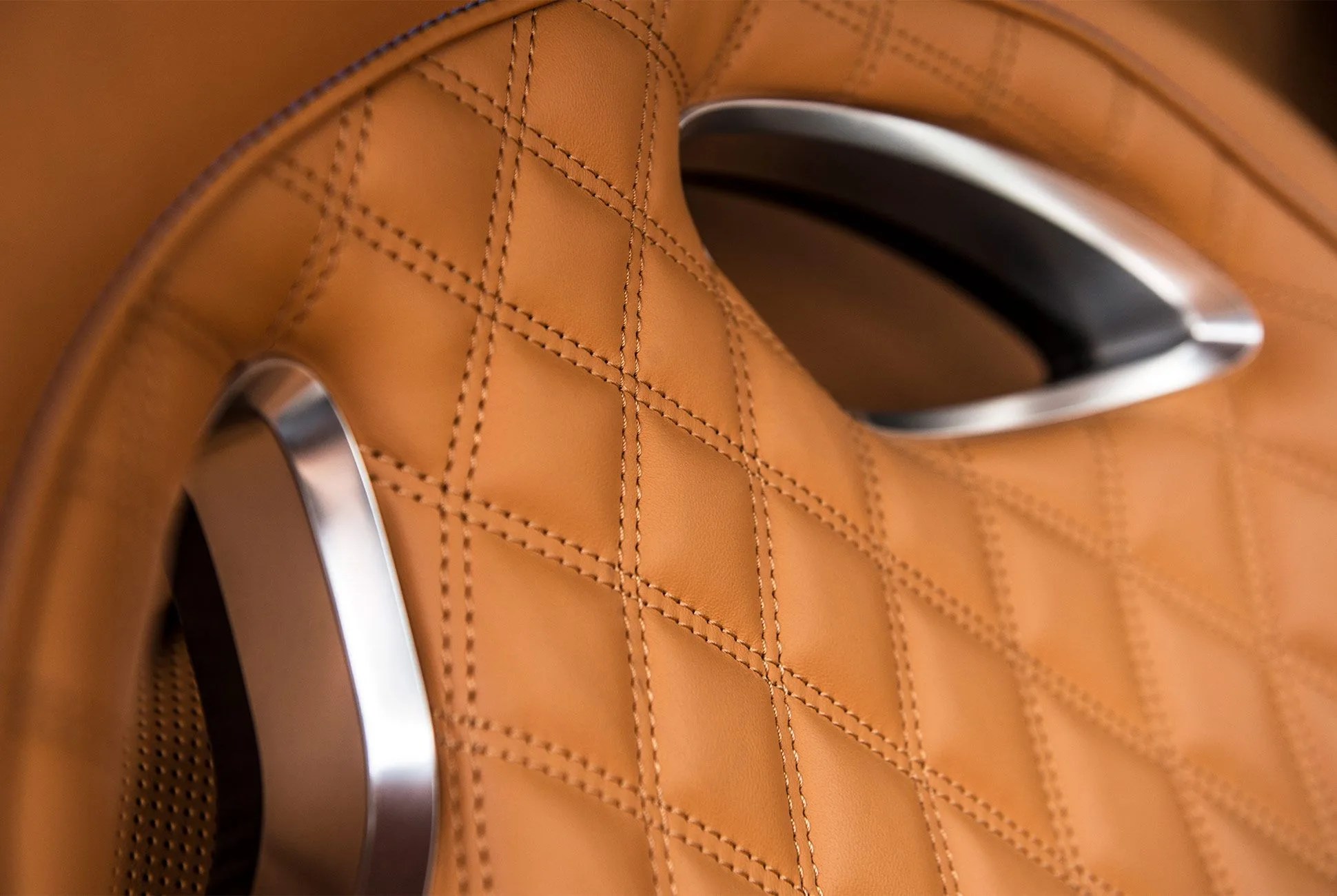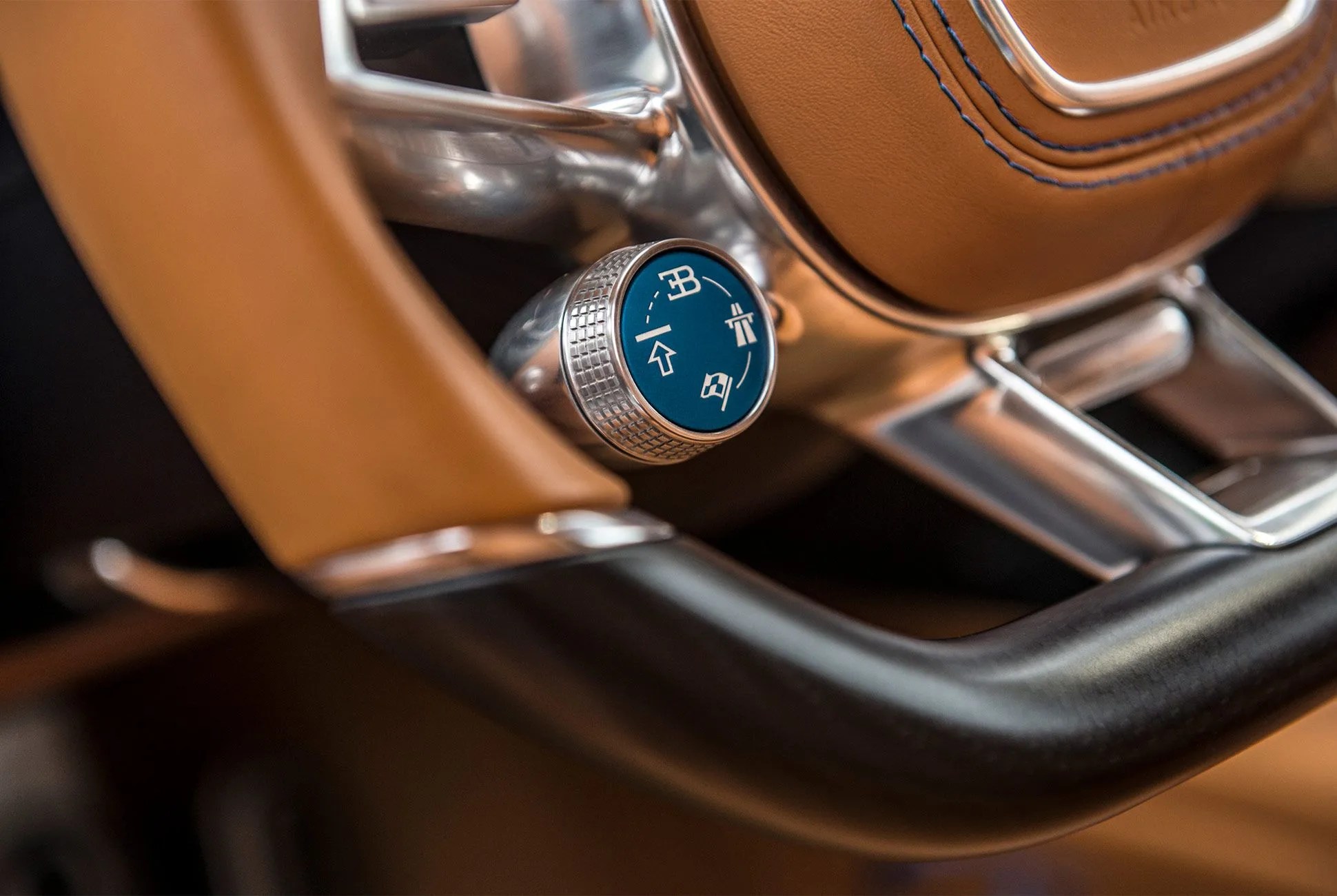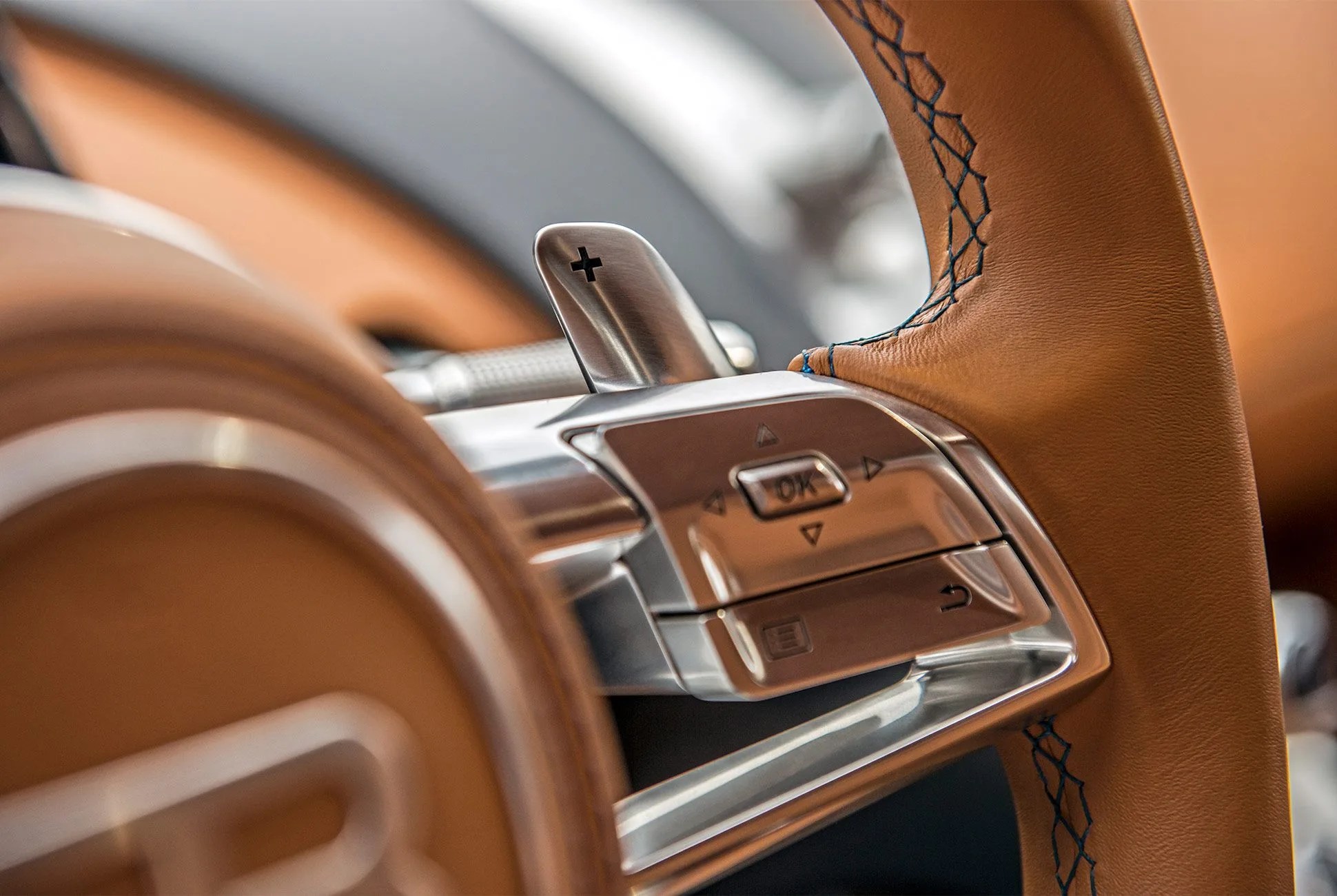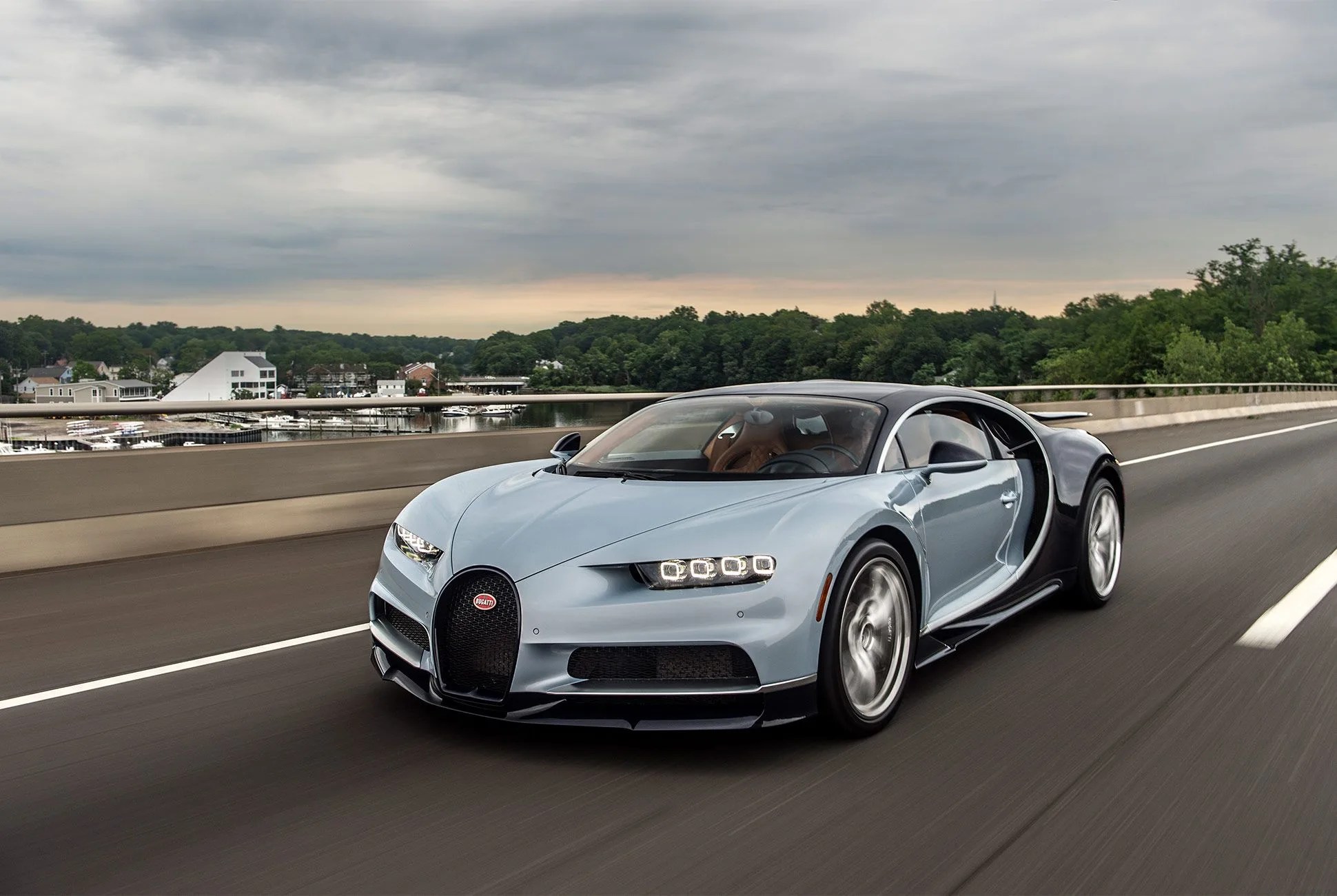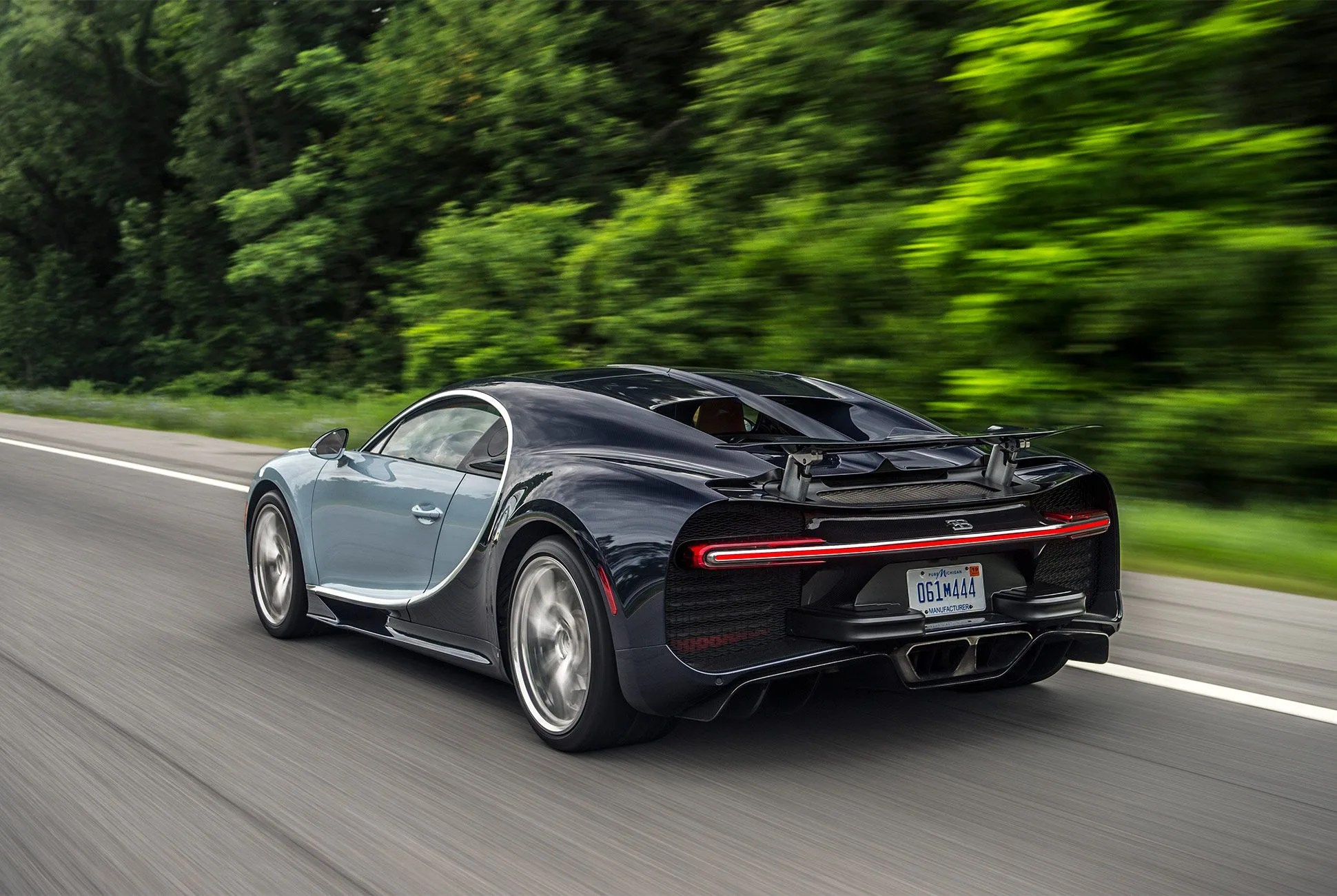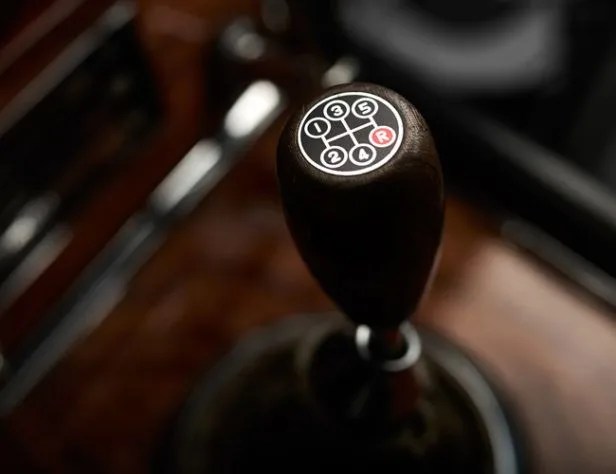15 photos
Dissecting Chiron’s performance and uncorking its avalanches of statistics can be about as much fun as reading the SparkNotes guide to The Sound and the Fury, watching highlights from The Godfather on YouTube, or asking Picasso about the paints he used to create Guernica. To my mind, those details aren’t really necessary. Chiron is less a hypercar than it is a piece of performance art, and it deserves to be treated as such. Enjoy the ride. Savor the mystery.
Suffice it to say that all the engineering behind Chiron is absolutely sufficient to achieve the performance goals that Bugatti established going into the long-awaited successor to the Bugatti Veyron. It’s fast, and it handles, and there’s a lot going on beneath the crisply creased carbon fiber body panels to make it all happen. But in the end, like its predecessor, it exists on a higher level than any other top-shelf sporting machine. When I got behind the wheel of the car recently, that was what I was most curious about. Not the details, but the cumulative effect. I wanted to see if it felt greater than the sum of its parts, to gauge its impact on a driver. What does the brain feel like on Bugatti?
Chiron is not like other super-hyper-ultra-cars: Lamborghinis, Ferraris, Paganis, Koenigseggs, and the others all still cut distinctly angular profiles that seem to be straining against the need to extend vertically. Chiron, less so. Its front end is a remarkably robust wave of metal — a big snout that defies convention. Its horseshoe grille contains a hand-painted, silver and ceramic badge that’s curved ever so slightly — the result of a manufacturing process in which the silver contracts during the baking process and forces the typically brittle and unbendable ceramic to curve right along with it. The sides feature enormous, gracefully curving chrome character lines that arc all the way from the roof, to the rear intakes, to the bottom door sill, to the front wheel. That line is a bold statement, a visual signature the likes of which hasn’t really been seen since the wild horizontal strakes of the Ferrari Testarossa in the ’80s. Both design strokes work brilliantly, exerting themselves by sheer force of will — helped along by their perfect proportions. Or, in racing terminology: They use all the track, without hitting the wall. Chiron is a machine capable of withering extremes, yet also a refined, beautiful bit of industrial sculpture.
2018 Bugatti Chiron
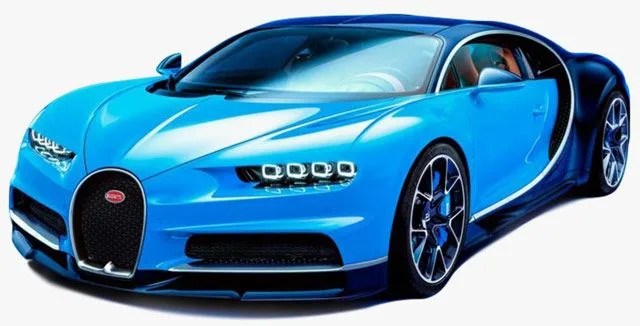
Engine: 8-liter, quad-turbo W-16
Transmission: 7-speed dual-clutch automatic
Horsepower: 1,479
Torque: 1,180 lb-ft
0-60: 2.5 seconds
Top speed: 261 mph
MSRP: $2,998,000 (base)
